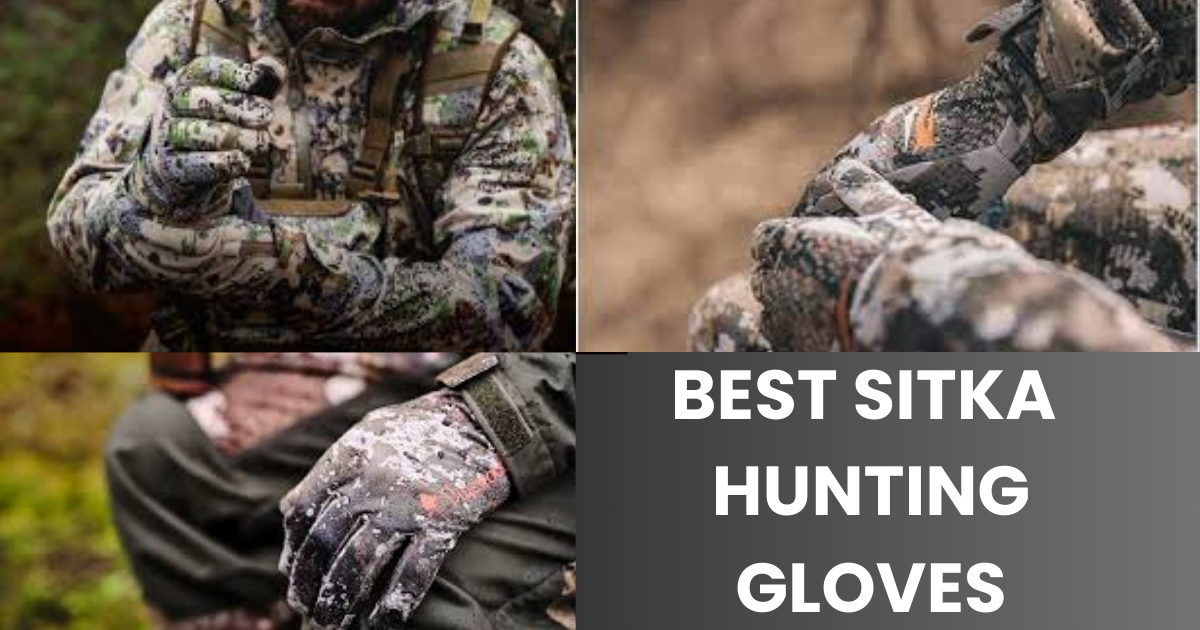As an experienced hunter, I’ve learned the hard way that cold hands can make or break a hunt. I’ll never forget one trip when temperatures plummeted well below zero, and the wind was unbearable. I used to think a thick pair of gloves would do the trick, but that day, my hands went numb within hours. I couldn’t grip my rifle, let alone focus on the hunt. That’s when I discovered the Sitka glove layering system.
On my next outing, I started with the lightweight Sitka Traverse gloves for moisture-wicking, added the Gradient gloves for insulation, and finished with the Stormfront gloves for waterproof protection. What a difference it made! My hands stayed warm, dry, and surprisingly nimble, even in freezing rain. I could adjust my gear, handle my weapon, and endure long hours without discomfort. Since then, I’ve shared this system with fellow hunters, and they all agree—it’s a game-changer. If you’re serious about cold-weather hunting, layering Sitka gloves is a must. It’s about comfort, control, and making every shot count.
Contents
- 1 Why Layering Matters for Extreme Cold Weather.
- 1.1 Layering Sitka Hunting Gloves: A Game-Changer for Cold Weather Hunts
- 1.2 The Sitka Glove Layering System Explained
- 1.3 Why Layering Matters for Extreme Cold Weather
- 1.4 Guide to Layering Sikta Glove
- 1.5 The Sitka Glove Layering System Explained
- 1.6 Pro Tip: Adjust Layers Based on Activity
- 1.7 Benefits of Sitka Gloves
- 1.8 FAQs
Why Layering Matters for Extreme Cold Weather.
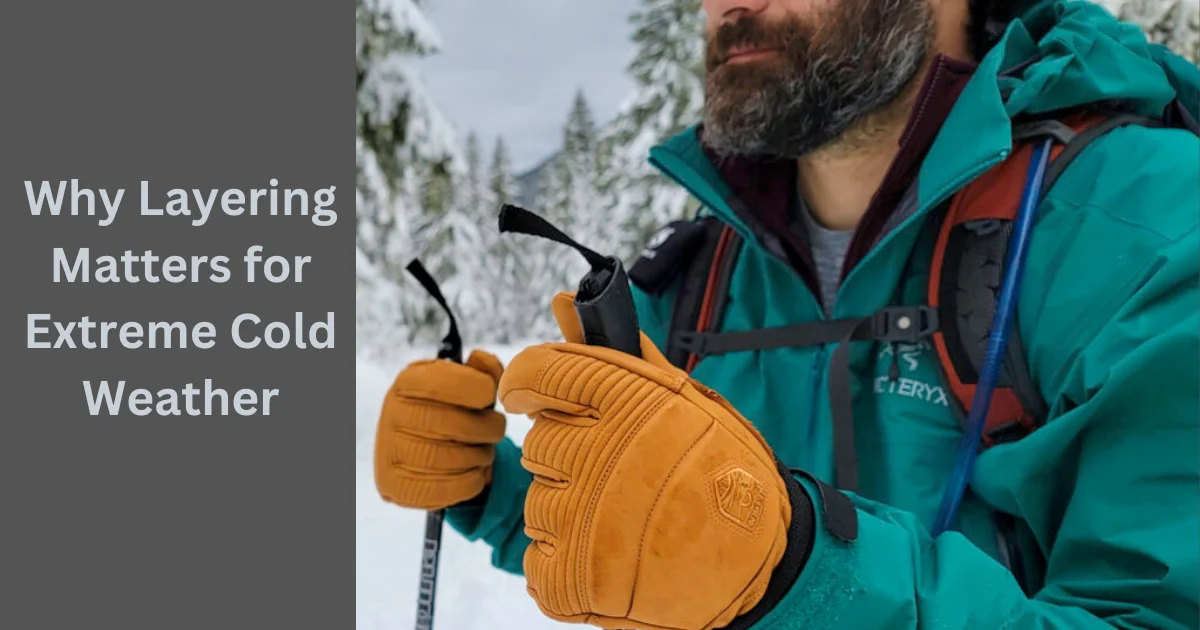
Layering Sitka Hunting Gloves: A Game-Changer for Cold Weather Hunts
When you’re out in freezing weather, it’s often your hands that feel the cold the most. With biting winds and frozen gear, your fingers can quickly become numb. That makes it hard to pull the trigger, adjust your gear, or even hold your weapon. Layering Sitka hunting gloves can make all the difference. With the right layers, you’ll stay warm, comfortable, and agile—even on those brutal, sub-zero mornings.
With Sitka gloves, you get a system designed for maximum comfort and precision. Start with a lightweight moisture-wicking liner to keep sweat away, preventing cold from creeping in. Then, add an insulating mid-layer for warmth, such as fleece or PrimaLoft. Finally, finish with a weather-resistant shell that shields you from snow, rain, and wind without sacrificing mobility. This system keeps your hands warm and functional, even during long, challenging hunts.
The Sitka Glove Layering System Explained
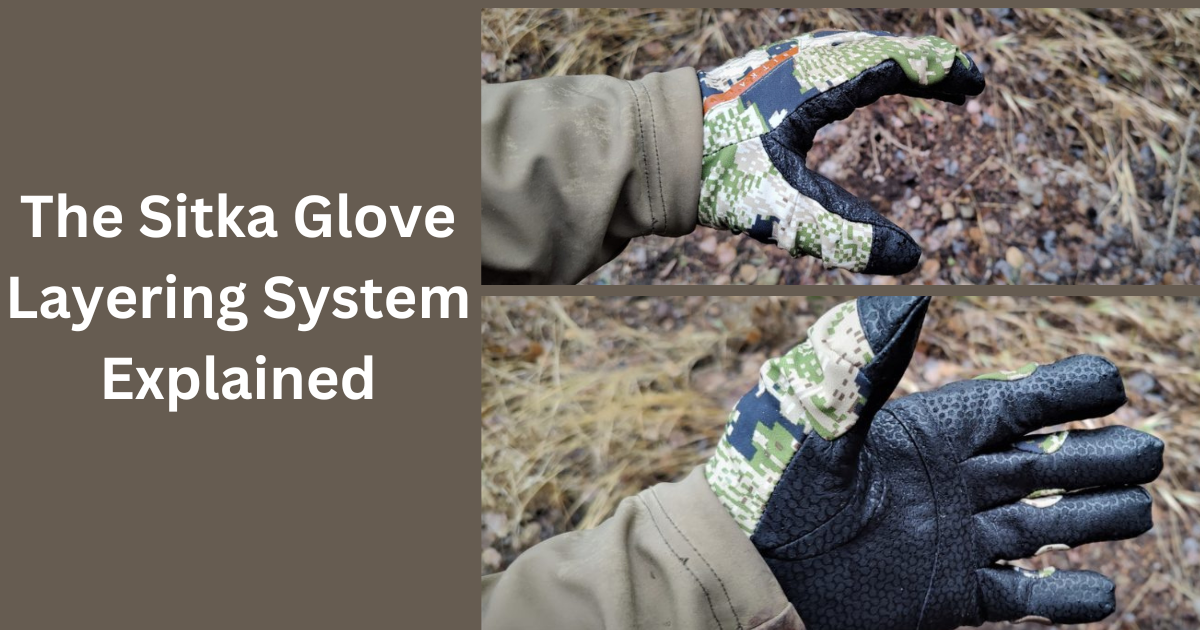
Why Layering Matters for Extreme Cold Weather
Layering your gloves is like building a fortress for your hands. Each layer plays a vital role, keeping you warm, dry, and fully functional during those long hours outdoors. The base layer, which wicks away moisture, prevents the chill of dampness. The insulating layer traps heat, while the outer shell acts as a barrier against the elements.
Sitka gloves, especially the GORE-TEX options, are engineered for extreme weather. They combine cutting-edge insulation with waterproof protection, so your hands stay dry and warm, no matter the conditions. Whether you’re handling a firearm, adjusting your gear, or staying alert, Sitka gloves let you stay on top of your game—without worrying about frozen fingers.
Guide to Layering Sikta Glove
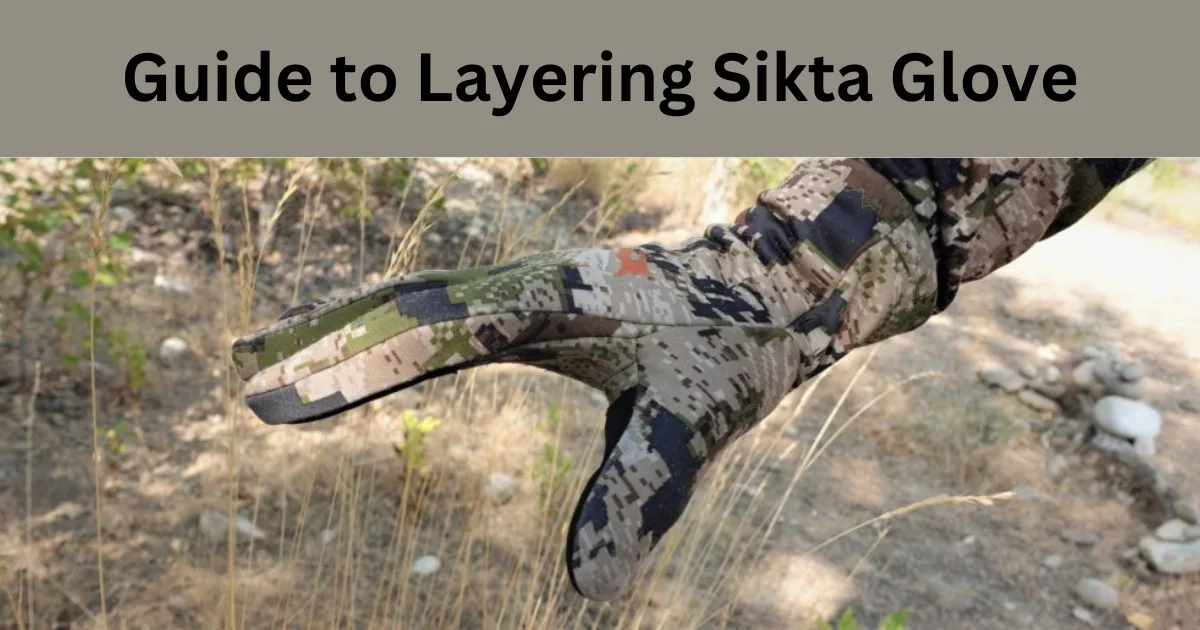
The Sitka Glove Layering System Explained
The Sitka glove layering system is all about warmth, comfort, and versatility. Let’s break it down:
- Base Layer: Lightweight Sitka Gloves Start with the Sitka Traverse gloves. They wick moisture away and keep your hands dry, which is crucial for preventing the cold that comes with dampness. These gloves fit snugly and breathe well, providing comfort during physically demanding hunts.
- Insulating Layer: Mid-Layer Sitka Gloves Next, add an insulating layer like the Sitka Gradient gloves. These trap heat and provide warmth, even in sub-zero temperatures. They give you the right balance of warmth and flexibility, so you can still handle your gear or firearm with ease.
- Outer Layer: Waterproof Sitka Gloves Finally, top it off with the Sitka Stormfront gloves, featuring GORE-TEX technology. These gloves are waterproof and windproof, keeping you dry and comfortable in the harshest conditions. They protect the inner layers and ensure that you stay warm and functional.
By layering Sitka gloves, you create a flexible, adaptable system that keeps you warm and ready for anything—whether you’re facing freezing rain, snow, or just bitterly cold winds.
Step-by-Step Guide to Layering Sitka Gloves
Here’s a simple, step-by-step guide to layering Sitka gloves for maximum protection and comfort:
- Start with the Base Layer Choose moisture-wicking gloves like the Sitka Traverse gloves. This layer is key because it keeps sweat from freezing, which can lead to frostbite. The lightweight design lets your hands breathe while staying dry.
- Add the Insulating Layer Next, add a pair of insulating gloves like the Sitka Gradient gloves. These provide warmth without adding bulk, so your hands stay cozy without losing dexterity.
- Finish with the Outer Shell Top off your gloves with the Sitka Stormfront gloves. These gloves are designed to protect against snow, wind, and rain, ensuring the layers underneath stay effective.
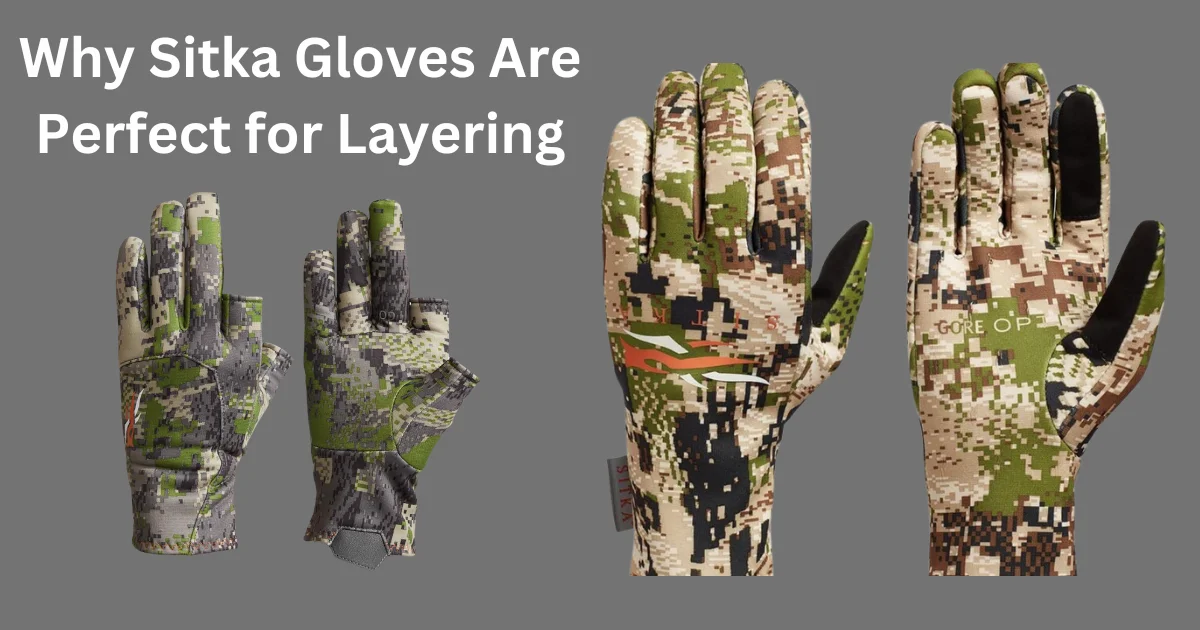
Pro Tip: Adjust Layers Based on Activity
Not all hunts are the same. If you’re moving around a lot, like tracking game, you may only need the base and insulating layers to avoid overheating. But if you’re sitting still for long periods, like waiting in a blind, all three layers are crucial to stay warm.
Why Sitka Gloves Are Perfect for Layering
Sitka gloves are specifically designed to help hunters perform their best in the coldest conditions. What sets them apart is the combination of moisture-wicking, insulating, and waterproof layers. These gloves are durable, versatile, and engineered to withstand tough weather, ensuring your hands stay warm and functional for years.
The GORE-TEX integration ensures waterproof protection without compromising dexterity, so you can still handle your gear and firearm with precision. Plus, Sitka gloves last season after season, making them a reliable long-term investment for hunters.
Real-Life Tips from Hunters
Hunters who use Sitka gloves swear by their effectiveness. One hunter shared, “Using the Sitka gloves for cold weather hunting, I’ve survived minus 20-degree hunts without a hitch!” Another said, “The Sitka Stormfront gloves are the best for extreme cold—no snow, wind, or rain can get through!”
Whether you’re dealing with fluctuating temperatures or steady sub-zero weather, Sitka gloves keep you warm, dry, and ready for anything.
Benefits of Sitka Gloves
- GORE-TEX Protection: Keeps hands dry during rain, snow, or while handling wet gear.
- Breathable Base Layer: Prevents moisture buildup, keeping your hands dry and comfortable.
- Insulating Mid-Layer: Traps heat to keep you warm, even in extreme cold.
- Weather-Resistant Outer Layer: Shields your hands from wind, snow, and rain, ensuring maximum protection and comfort.
Conclusion: Why Sitka Gloves Are Essential for Winter Hunts
When it comes to winter hunting, staying warm and functional is critical, and Sitka gloves are the ultimate solution. With their layering system, you can face extreme cold without sacrificing mobility or comfort. Starting with lightweight moisture-wicking gloves and finishing with durable waterproof layers, Sitka gloves have you covered.
So, for your next cold-weather hunt, gear up with Sitka gloves. Layer up, stay warm, and focus on your hunt—knowing your gloves have your back.
FAQs
Q: What are the best Sitka gloves for extreme cold weather?
A: The Sitka Stormfront glove is ideal for extreme cold with its GORE-TEX waterproofing and windproof shell.
Q: Are Sitka gloves waterproof or just water-resistant?
A: Most Sitka gloves, especially the outer layers, are fully waterproof, not just water-resistant.
Q: How many layers should you wear in sub-zero temperatures?
A: Typically, three layers—a moisture-wicking base, insulating mid-layer, and waterproof shell—are perfect for sub-zero hunts.
Q: How do Sitka gloves compare to Under Armour for extreme cold?
A: Sitka gloves offer better insulation and durability, making them ideal for extreme cold, while Under Armour gloves are more suited for milder conditions.

